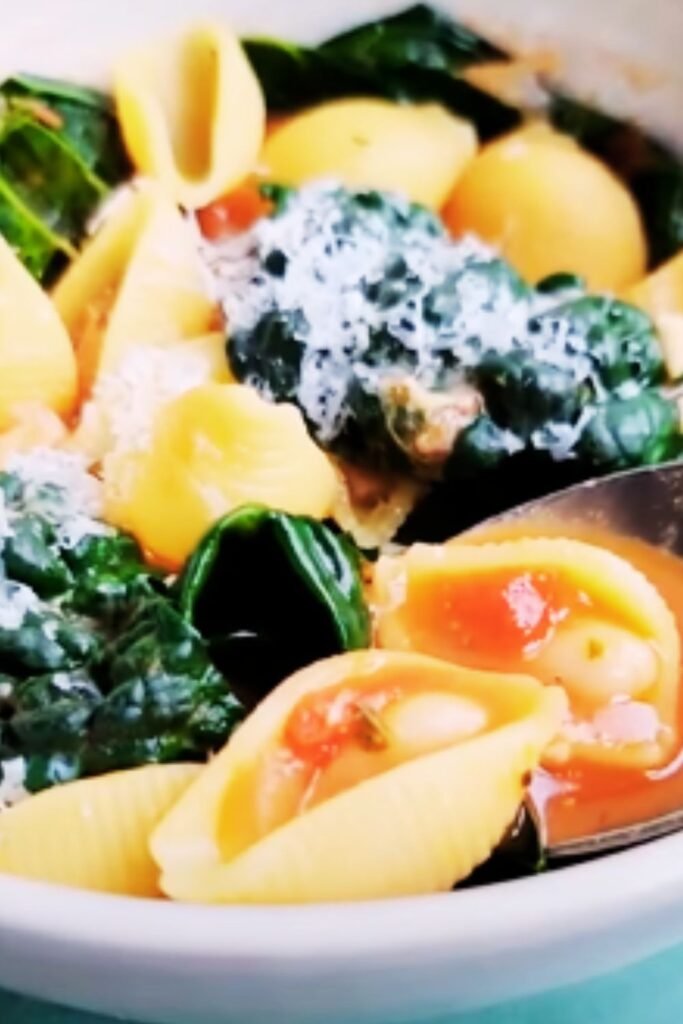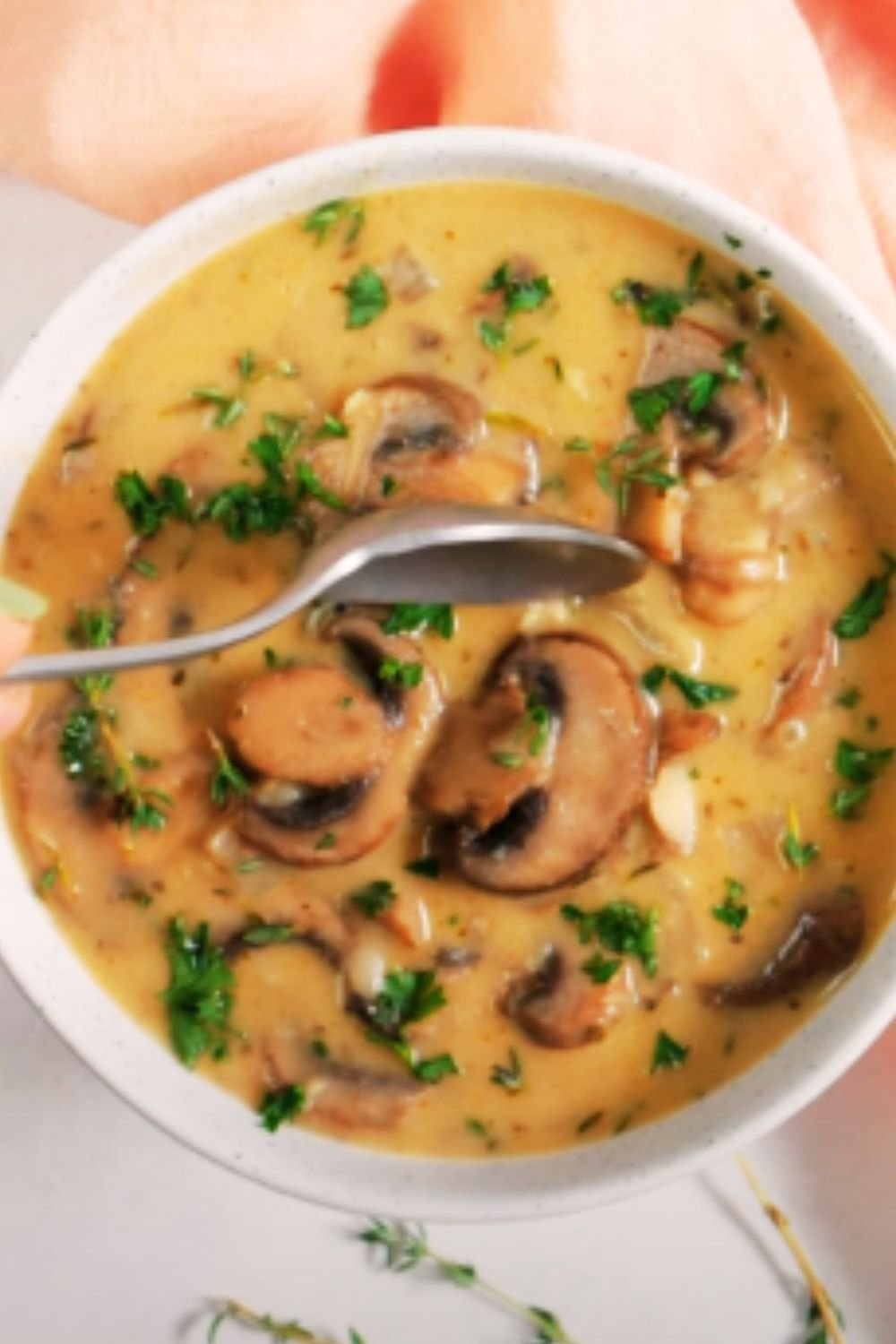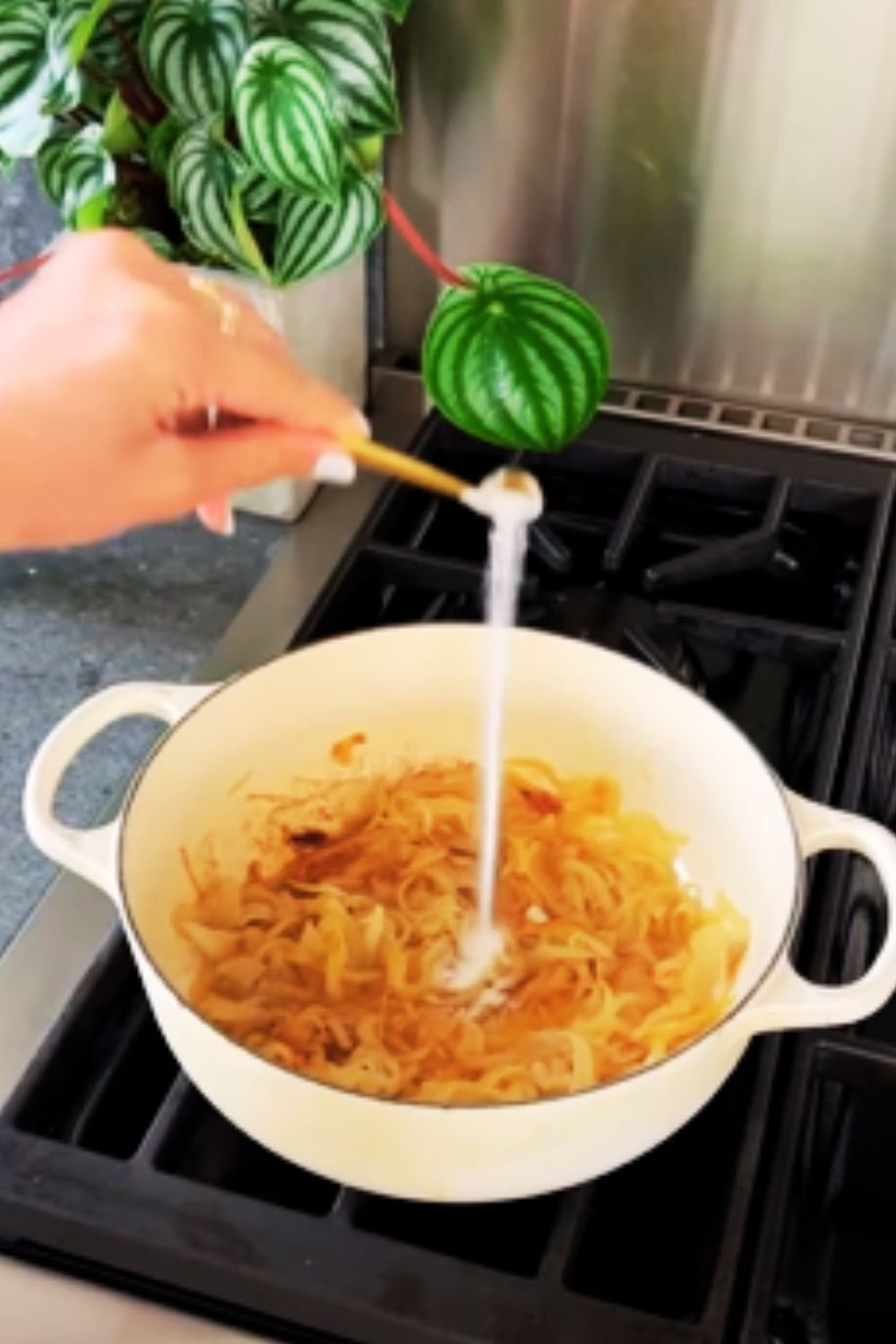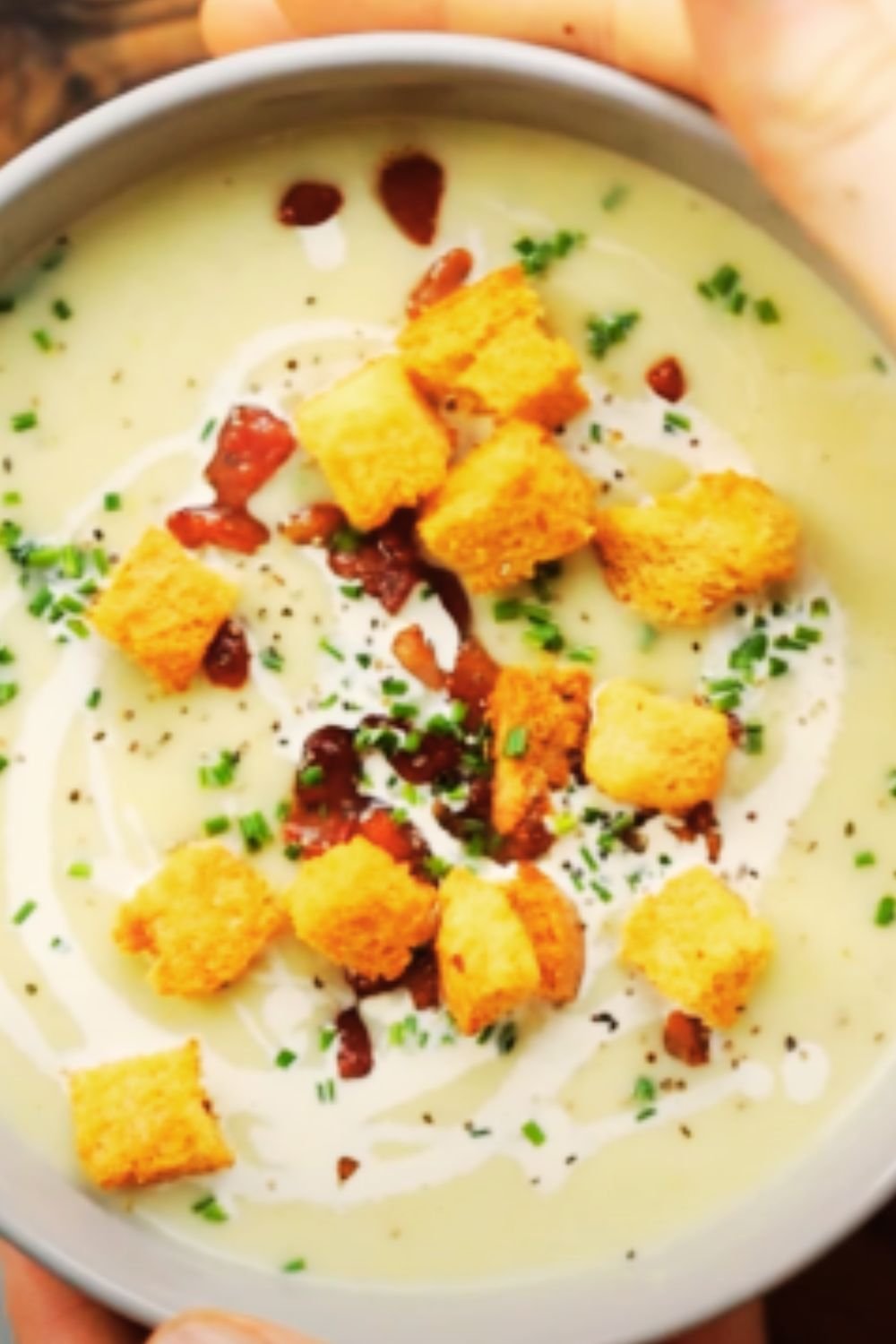There’s something magical about the first spoonful of a hearty stew on a chilly evening. That moment when the warmth spreads through your body, and you can feel yourself relaxing into comfort. Today, I’m sharing one of my absolute favorite recipes that creates this exact sensation: Cozy White Bean Mushroom Stew.
This isn’t just any stew – it’s a celebration of earthy mushrooms and creamy white beans coming together in perfect harmony. The best part? It’s completely vegan while being incredibly satisfying and rich in flavor. Even dedicated meat-eaters who visit my home rave about this dish and often ask for seconds.
I discovered this recipe during a particularly cold winter several years ago when I was looking for something warming that would also boost my immune system. Since then, I’ve perfected it through countless iterations, adjusting herbs and techniques until reaching what I consider the ultimate version.
What makes this stew special is how the humble ingredients transform into something truly magnificent. The mushrooms provide that meaty, umami satisfaction while the white beans add creaminess and protein. A carefully selected blend of herbs and a splash of white wine vinegar elevates the flavors to restaurant quality.
So gather your ingredients, put on your favorite music, and let’s create some kitchen magic together. This stew will not only nourish your body but will fill your home with the most inviting aromas imaginable.
Ingredients
For the Base
- 2 tablespoons olive oil
- 1 large yellow onion, diced
- 3 medium carrots, diced
- 3 celery stalks, diced
- 4 cloves garlic, minced
- 1 tablespoon fresh thyme leaves (or 1 teaspoon dried)
- 1 tablespoon fresh rosemary, finely chopped (or 1 teaspoon dried)
- 1 tablespoon fresh sage, finely chopped (or 1 teaspoon dried)
- 1/2 teaspoon red pepper flakes (adjust to taste)
- 1 teaspoon smoked paprika
- 1/2 teaspoon ground black pepper
- 1 teaspoon sea salt (plus more to taste)
For the Mushroom Mixture
- 2 tablespoons olive oil
- 1.5 pounds mixed mushrooms (cremini, shiitake, oyster), sliced
- 3 tablespoons tamari or soy sauce
- 2 tablespoons nutritional yeast
For the Stew
- 3 (15 oz) cans white beans (cannellini or navy), drained and rinsed
- 4 cups vegetable broth
- 1 cup unsweetened plant milk (oat or almond works well)
- 2 bay leaves
- 1 tablespoon white wine vinegar
- 1/4 cup fresh parsley, chopped
To Thicken (Optional)
- 2 tablespoons cornstarch mixed with 3 tablespoons cold water
Equipment Needed
- Large heavy-bottomed pot or Dutch oven
- Sharp knife
- Cutting board
- Measuring cups and spoons
- Wooden spoon
- Small bowl (for cornstarch slurry if using)
Preparation Method
Step 1: Prepare Your Mise en Place
Before starting, I always find it helpful to have everything chopped, measured, and ready to go. This French culinary concept of “everything in its place” makes the cooking process much more enjoyable and less stressful.
- Dice the onion, carrots, and celery into small, even pieces.
- Mince the garlic.
- Chop the herbs.
- Clean and slice the mushrooms (don’t wash them; instead, wipe with a damp paper towel).
- Drain and rinse the white beans.
- Measure out the liquid ingredients and spices.
Step 2: Create the Aromatic Base
The foundation of any good stew is its aromatic base, which builds the flavor profile from the ground up.
- Heat 2 tablespoons of olive oil in your pot over medium heat.
- Add the diced onion and cook for 3-4 minutes until translucent.
- Add the carrots and celery, cooking for another 5-7 minutes until they begin to soften.
- Add the minced garlic, thyme, rosemary, and sage. Cook for 1 minute until fragrant.
- Add the red pepper flakes, smoked paprika, black pepper, and salt. Stir to combine all ingredients well.
Step 3: Cook the Mushrooms
Mushrooms deserve special treatment to develop their full flavor potential.
- In a separate large skillet, heat 2 tablespoons of olive oil over medium-high heat.
- Add the sliced mushrooms in a single layer (you may need to do this in batches to avoid overcrowding).
- Let the mushrooms cook undisturbed for 3-4 minutes until they begin to brown.
- Stir and continue cooking for another 3-4 minutes until they’ve released their moisture and started to caramelize.
- Pour in the tamari or soy sauce and stir to coat the mushrooms.
- Sprinkle with nutritional yeast and stir again. Cook for another minute.
- Transfer the mushroom mixture to your pot with the aromatics.
Step 4: Build the Stew
Now we bring everything together to create our hearty stew.
- Add the drained and rinsed white beans to the pot.
- Pour in the vegetable broth and plant milk.
- Add the bay leaves.
- Bring the mixture to a gentle boil, then reduce heat to low.
- Simmer uncovered for 25-30 minutes, stirring occasionally.
Step 5: Add Depth and Thickness
These final touches transform a good stew into an exceptional one.
- After simmering, use a wooden spoon to mash some of the beans against the side of the pot. This will naturally thicken the stew and create a creamier texture.
- For additional thickness, mix cornstarch with cold water until smooth, then slowly stir into the stew. Simmer for an additional 5 minutes.
- Add the white wine vinegar – this small amount of acid brightens all the flavors.
- Taste and adjust seasoning if needed.
- Stir in most of the chopped parsley, reserving some for garnish.
Step 6: Serve
- Remove bay leaves.
- Ladle the stew into bowls.
- Garnish with reserved fresh parsley.
- Serve with crusty bread for dipping.

Nutritional Information
This nutritional information is provided per serving, assuming the recipe serves 6:
| Nutrient | Amount |
|---|---|
| Calories | 325 |
| Protein | 18g |
| Carbohydrates | 45g |
| Fiber | 11g |
| Sugar | 5g |
| Fat | 10g |
| Saturated Fat | 1.5g |
| Sodium | 650mg |
| Potassium | 820mg |
| Iron | 5mg |
| Calcium | 120mg |
| Vitamin A | 3500 IU |
| Vitamin C | 12mg |
The Science Behind the Satisfaction
What makes this stew so satisfying even without meat? It’s a fascinating combination of culinary science:
Umami Development
Mushrooms are naturally rich in glutamates – compounds responsible for the savory fifth taste known as umami. When mushrooms are properly browned, these compounds become more pronounced. The addition of nutritional yeast and tamari further enhances this umami character, creating a deeply satisfying flavor profile that many describe as “meaty” despite being completely plant-based.
Texture Variety
A successful stew needs textural contrast. Here’s how this recipe achieves it:
| Ingredient | Texture Contribution |
|---|---|
| Mushrooms | Meaty, substantial chew |
| White beans | Creamy, tender |
| Carrots | Slight firmness |
| Celery | Light crunch |
| Mashed beans | Thickening agent creating silky broth |
Aromatic Layering
The sequence of adding ingredients is intentional:
- Sautéing the mirepoix (onions, carrots, celery) develops sweetness
- Blooming the herbs and spices in oil releases their essential oils
- Properly browning mushrooms develops complex flavors
- Simmering allows flavor melding and bean softening
- Adding acid at the end brightens all flavors
Storage and Freezing Tips
This stew actually improves with time as the flavors continue to meld together. Here’s how to properly store it:
Refrigeration
- Cool completely before transferring to airtight containers
- Will keep in the refrigerator for up to 5 days
- Reheat gently on the stovetop, adding a splash of broth if needed to loosen
Freezing
- Freeze in individual portions for easy meal prep
- Use freezer-safe containers or heavy-duty freezer bags
- Label with date and contents
- Will keep for up to 3 months in the freezer
- Thaw overnight in refrigerator before reheating

Variations to Try
Once you’ve mastered the basic recipe, consider these delicious variations:
Tuscan-Inspired
- Add 2 cups chopped kale in the last 5 minutes of cooking
- Include 1 tablespoon of tomato paste with the aromatics
- Use cannellini beans exclusively
- Add 1 teaspoon of fennel seeds when cooking the aromatics
French Countryside
- Use herbes de Provence instead of the individual herbs
- Add 1/2 cup of dry white wine after cooking the mushrooms
- Include 1 leek (white and light green parts only), finely sliced
- Garnish with fresh tarragon instead of parsley
Warming Moroccan Twist
- Add 1 teaspoon each of ground cumin and coriander
- Include 1/2 teaspoon of cinnamon
- Add 1/4 cup of chopped dried apricots
- Garnish with fresh mint and a squeeze of lemon
Creamy Variation
- Blend 1 cup of the beans with 1/2 cup plant milk before adding to the stew
- Add 2 tablespoons of cashew butter for extra richness
- Use immersion blender to partially blend the stew for a creamier texture
Serving Suggestions
A stew this good deserves perfect accompaniments. Here are my favorite pairings:
Bread Options
- Crusty sourdough bread
- Garlic toast
- Rosemary focaccia
- Whole grain bread bowls (serve the stew inside for an impressive presentation)
Side Salads
- Simple arugula salad with lemon vinaigrette
- Shaved fennel and orange salad
- Roasted beet and walnut salad
- Kale salad with dried cranberries
Additional Toppings
- Homemade croutons
- Toasted pumpkin seeds
- A drizzle of good olive oil
- Fresh herbs (chives, parsley, or thyme)
- Crispy fried shallots

Frequently Asked Questions
Q: Can I make this stew in a slow cooker? A: Absolutely! Sauté the aromatics and mushrooms as directed, then transfer everything to your slow cooker. Cook on low for 6-7 hours or high for 3-4 hours. Add the plant milk, vinegar, and fresh herbs in the last 30 minutes of cooking.
Q: I don’t have all the fresh herbs. Can I use dried? A: Yes, just remember the conversion ratio: 1 tablespoon of fresh herbs equals 1 teaspoon of dried. Dried herbs have a more concentrated flavor, so you need less.
Q: Which mushrooms work best in this recipe? A: A mixture provides the best flavor complexity. Cremini (baby portobellos) give earthiness, shiitakes add a meaty texture, and oyster mushrooms provide delicacy. If limited, cremini mushrooms alone work wonderfully.
Q: Is there a substitute for nutritional yeast? A: While nutritional yeast adds a unique savory flavor, you can omit it. Consider adding an extra teaspoon of tamari or soy sauce and a teaspoon of miso paste to compensate for the umami flavor.
Q: How can I make this recipe soy-free? A: Replace the tamari or soy sauce with coconut aminos. The flavor profile will be slightly different but still delicious.
Q: My stew isn’t thick enough. What can I do? A: There are several ways to thicken the stew: 1) Mash more beans against the side of the pot; 2) Use the cornstarch slurry mentioned in the recipe; 3) Remove 1-2 cups of the stew, blend until smooth, then return to the pot; or 4) Simmer uncovered longer to reduce the liquid.
Q: Can I use dried beans instead of canned? A: Yes! Soak 1.5 cups of dried white beans overnight, then cook them separately until tender before adding to the recipe. This actually improves the flavor, though it does require advance planning.
Q: My family isn’t vegan. Can I add some animal products for them? A: This stew is designed to be satisfying even for non-vegans. However, if serving mixed dietary preferences, you can offer toppings on the side like grated parmesan cheese or crumbled bacon for non-vegans to add to their individual portions.
Q: How can I add more protein to this stew? A: The beans already provide substantial protein, but you could add a plant-based sausage (sliced and browned with the mushrooms) or a cup of quinoa (add with the broth and extend cooking time slightly).
Q: Is this recipe gluten-free? A: The stew itself is gluten-free if you use tamari instead of soy sauce. Just be mindful of your broth choice – some vegetable broths contain trace gluten.
Why This Recipe Works
After years of perfecting this stew, I’ve identified the key factors that make it successful every time:
- Proper mushroom cooking technique: Browning mushrooms in batches prevents them from steaming and ensures they develop deep flavor.
- Bean strategy: Using both whole and partially mashed beans creates textural contrast and natural creaminess.
- Acid balance: The small amount of white wine vinegar added at the end cuts through the richness and brightens all the flavors.
- Herb timing: Adding some herbs early allows their flavors to infuse the oil, while finishing with fresh herbs provides brightness.
- Umami layering: Multiple sources of umami (mushrooms, nutritional yeast, tamari) create remarkable depth of flavor without any animal products.
This stew represents what I love most about cooking: transforming simple ingredients into something that nourishes both body and soul. The recipe has been tested countless times, and I’ve served it to friends with varied dietary preferences – it’s always met with enthusiasm and requests for the recipe.
The beauty of this dish lies not just in its flavor, but in its generosity. It costs relatively little to make, yields enough for a crowd (or wonderful leftovers), and offers substantial nutrition. It’s the kind of cooking that makes me feel connected to the best traditions of home cooking – creating abundance from humble ingredients.
I hope this stew brings as much comfort to your table as it has to mine. There’s something deeply satisfying about ladling steaming portions into bowls on a cold evening, watching as people take their first spoonful and seeing that moment of pleasurable surprise when they discover just how rich and satisfying plant-based cooking can be.
Happy cooking!


